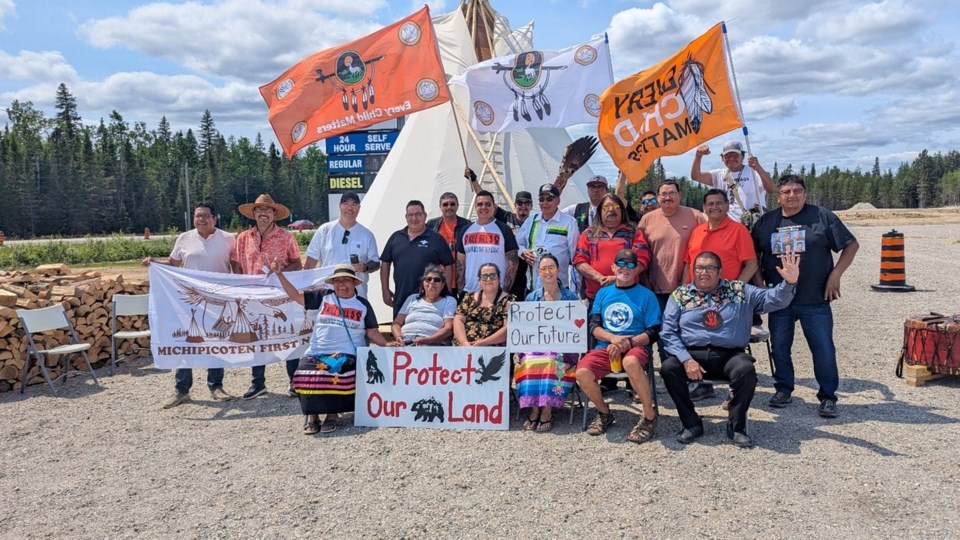A northern Ontario First Nation has completed a four-day demonstration that slowed down traffic on the Trans-Canada Highway, as it protests fast-tracked federal and provincial legislation designed to speed up mining and development.
Netmizaaggamig Nishnaabeg Chief Louis Kwissiwa said several dozen members of his community, along with several other First Nations leaders, protested alongside Highway 17 to show their disapproval of the federal Bill C-5 and the provincial Bill 5.
"We feel like our rights are being violated, and we're not being properly consulted," Kwissiwa said in an interview.
"We don't feel really respected by the bill and the community is upset, to say the least, leadership is upset and we're not going to stand by to allow our rights to be trampled on."
The federal legislation that passed recently is designed to speed up major projects deemed to be in the "national interest." A new provincial law goes further and gives cabinet the power to suspend provincial and municipal laws in so-called special economic zones in order to speed up projects such as mines.
Both levels of government want to mine the mineral-rich Ring of Fire region, but the new laws have sparked outrage among many First Nations.
Dozens of First Nations protested at both Queen's Park and Parliament Hill in the past two months over the legislation that they say tramples their rights and ignores their concerns.
They've warned of blockades of highways, railways and mines should the governments not reverse course and work with them.
Netmizaaggamig Nishnaabeg, known in English as Pic Mobert First Nation, is situated north of Lake Superior near the Trans-Canada Highway and a freight railway.
But its chief stopped short of threatening a blockade.
"It's not a threat it's just the obvious, this is where we're located, it's obviously right there and I don't know what will come of it," Kwissiwa said.
"But we just need to be at the negotiation table and we're trying to do things in a good way because we don't want to go down those (blockade) routes."
The First Nation worked with the Ontario Provincial Police over the course of their four-day demonstration on a stretch of Highway 17, where traffic slowed to 50 km/h rather than the posted 90 km/h speed limit, Kwissiwa said.
They set up near a commercial site that is being built, chosen symbolically to show the First Nations' desire for economic development. They have partnered with mines, forestry and energy projects to better their community.
"We have three mining operations within our traditional territory, so we're not against it," he said.
"We just need to be properly consulted, we need to be at the negotiation table. We have families to feed, we have a community to take care of and we want to be a part of the negotiations and to respect our environment and to respect our children and to respect our authority as stewards of the land."
First Nations have begun mobilizing across Ontario in response to the passage of both bills.
Last week, Attawapiskat First Nation and Neskantaga First Nation began setting up a quasi-permanent encampment near a proposed road and bridge site to the Ring of Fire. That followed one family's 400-kilometre journey up the Attawapiskat River by canoe to reassert First Nations presence near a mining exploration site in the Ring of Fire.
Another group from Grassy Narrows First Nation remains camped out in the park near the Ontario legislature, replete with "Kill Bill 5" signs.
This report by The Canadian Press was first published July 4, 2025.
Liam Casey, The Canadian Press



